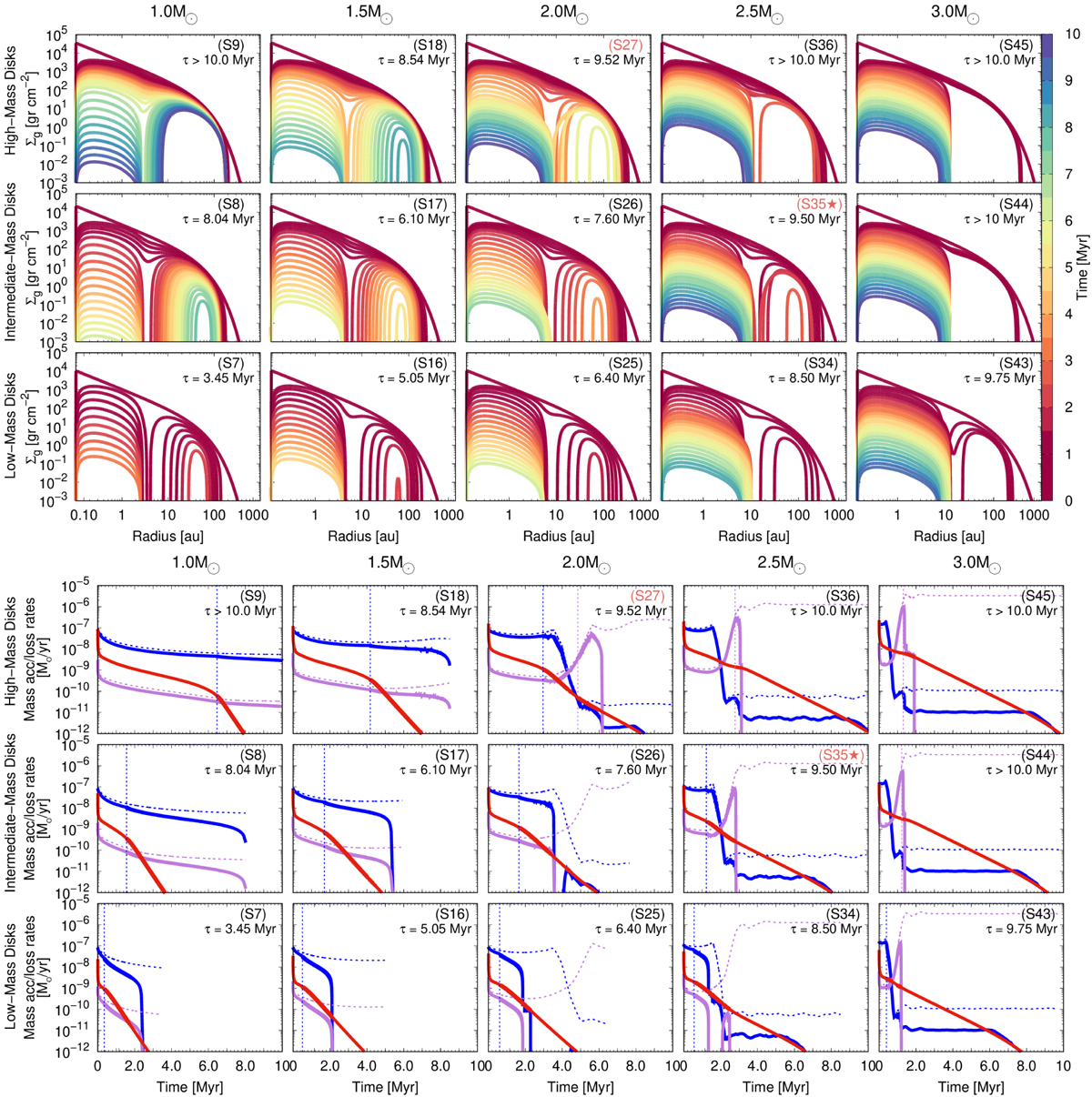Fig. 3

Download original image
Same as Figs. 1 and 2 but for discs with α0 = 10−4 and gas disc profiles plotted every 0.35 Myr. For the lowest viscosity parameter in our grid, we did not find any disc that follows the classical inside-out disc dissipation pathway. Instead, for the lowest mass stars, we predict the photoevaporation timescale of the outer disc to be similar to the viscous timescale of the outer disc, which implies that both components disappear nearly simultaneously (homogeneous disc evolution, see Sect. 3.2). With increasing stellar mass, the evolution switches first to revenant disc evolution (S27, S35*, see Sect. 3.4) and then to outside-in disc dispersal (S34, S36, S43, S45, see Sect. 3.3 for details).
Current usage metrics show cumulative count of Article Views (full-text article views including HTML views, PDF and ePub downloads, according to the available data) and Abstracts Views on Vision4Press platform.
Data correspond to usage on the plateform after 2015. The current usage metrics is available 48-96 hours after online publication and is updated daily on week days.
Initial download of the metrics may take a while.


